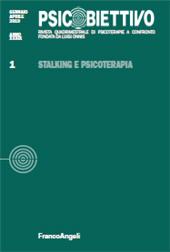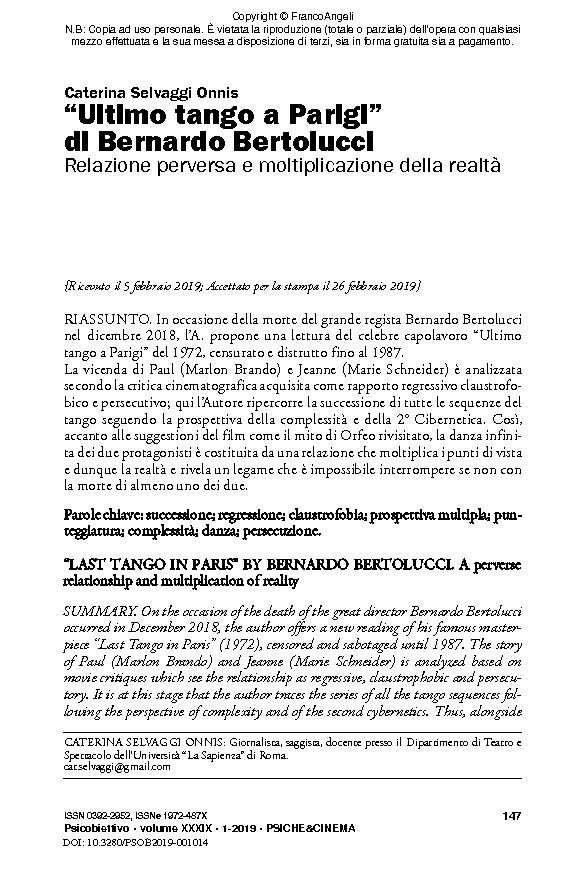Ultimo tango a Parigi di Bernardo Bertolucci : relazione perversa e moltiplicazione della realtà
147-158 p.
In occasione della morte del grande regista Bernardo Bertolucci nel dicembre 2018, l'A. propone una lettura del celebre capolavoro "Ultimo tango a Parigi" del 1972, censurato e distrutto fino al 1987. La vicenda di Paul (Marlon Brando) e Jeanne (Marie Schneider) è analizzata secondo la critica cinematografica acquisita come rapporto regressivo claustrofobico e persecutivo; qui l'Autore ripercorre la successione di tutte le sequenze del tango seguendo la prospettiva della complessità e della 2° Cibernetica. Così, accanto alle suggestioni del film come il mito di Orfeo rivisitato, la danza infinita dei due protagonisti è costituita da una relazione che moltiplica i punti di vista e dunque la realtà e rivela un legame che è impossibile interrompere se non con la morte di almeno uno dei due. [Testo dell'editore].
On the occasion of the death of the great director Bernardo Bertolucci occurred in December 2018, the author offers a new reading of his famous masterpiece "Last Tango in Paris" (1972), censored and sabotaged until 1987. The story of Paul (Marlon Brando) and Jeanne (Marie Schneider) is analyzed based on movie critiques which see the relationship as regressive, claustrophobic and persecutory. It is at this stage that the author traces the series of all the tango sequences following the perspective of complexity and of the second cybernetics. Thus, alongside the associations of the movie, such as the myth of Orpheus revisited, the everlasting dance of the two main characters is formed by a relationship that not only multiplies the points of view but also the reality. This intersection reveals a bond that is impossible to interrupt without the death of at least one of the two. [Publisher's text].
-
Artikel aus derselben Ausgabe (einzeln erhältlich)
-
Informationen
ISSN: 1972-487X
THEMENBEREICHE
KEYWORDS
- Successione, regressione, claustrofobia, prospettiva multipla, punteggiatura, complessità, danza, persecuzione
- Succession, Regression, claustrophobia, Multiple Perspectives, Punctuation, Complexity, Dance, Persecution



